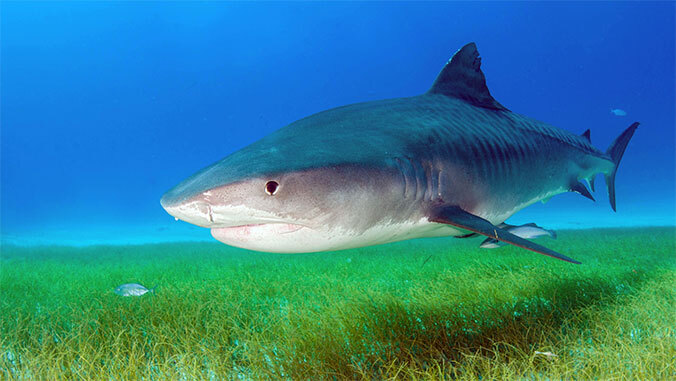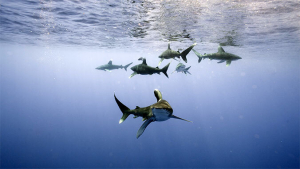
Shark conservation must go beyond simply protecting shark populations—it must prioritize protecting the ecological roles of sharks, according to new research at the University of Hawaiʻi.
The largest sharks of many of the biggest species, such as tiger sharks and great whites, play an oversized role in healthy oceans, but they are often the most affected by fishing. The big sharks help maintain balance through their eating habits. Sometimes their sheer size is enough to scare away prey that could over-consume seagrass and other plant life needed for healthy oceans.

Sharks also help shape and maintain balance from the bottom-up. That means a variety of sharks in a variety of sizes are needed, yet their many and diverse contributions are under threat from overfishing, climate change, habitat loss, energy mining, shipping activities and more. The study, led by Florida International University (FIU) with partners at UH Mānoa’s Hawaiʻi Institute of Marine Biology (HIMB) and others, was published in Science and sheds new light on how sharks- and their size- contribute to healthy oceans.
“New tools and technologies have enabled us to make huge strides in recent years in understanding the diverse—and critically important—roles that sharks play in the world’s ocean ecosystems,” explains Elizabeth Madin, co-author of the paper and associate professor at HIMB. “It’s clear now that protecting shark populations is a wise investment in ocean health, and one which ultimately benefits people and the planet.”
Besides helping to maintain balance within the food web, reef sharks feed in offshore waters and bring nutrients back to the reef. Others move nutrients around that are used at the base of the food chain. Sharks can also serve as food for other species and even as scratching posts for fish to remove parasites. The problem is shark abundance has plummeted by 71% for oceanic species in the past 50 years. Populations of the top five reef shark species have been depleted by 63%. As their numbers plummet, their important roles in ocean health are also lost.
“It’s time to have a conversation about everything sharks are doing to maintain ocean health so we can better prioritize conservation efforts and have the biggest impact,” said Simon Dedman, researcher at FIU and lead author of the study.
The issue of shark conservation becomes all the more critical as global temperatures increase, leading some sharks to head into new areas where they can find the temperatures they can thrive in.
“This study verifies what we’ve long suspected—sharks are critical to ocean health,” said Lee Crockett, executive director of the Shark Conservation Fund which funded the study. “This landmark study serves as confirmation that marine conservationists, philanthropists, policymakers, and the public alike need to recognize that sharks are keystone species that have a now-proven significant effect on marine environments.”
With the expansion of blue economy industries like aquaculture and tourism, people’s encounters with sharks will likely increase. Finding a balance that protects the sharks most needed for healthy oceans is hitting a critical point. “National and international policy must focus on actions that rebuild populations and restore sharksʻ functional roles,” said Mike Heithaus, study co-author and FIU marine ecologist. “That requires action to increase both spatial measures like Marine Protected Areas and fisheries management measures like catch/size limits and gear limitations. If people want healthy oceans, we need healthy shark populations.”

